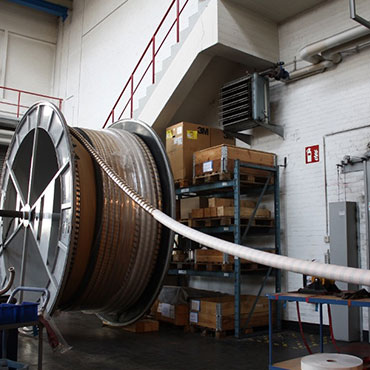The work package will develop and optimize the key components for long-length high-temperature superconducting (HTS) cable systems, operating at ± 50 kVDC and 10 kA, both onshore and offshore. These key components include the cable core, accessories, flexible cryostat, and cooling stations. Furthermore, a cable prototype will be manufactured and tested to ensure the right level of performance.
Key activities
The work package is structured into three main tasks:
1. Design of long-length 50 kVDC HTS cable systems
To attain long lengths for onshore systems, the use of a modular architecture is envisaged, by distributing small cooling and pumping units that would fit in joint pits. This is then compared with the same architecture using only a cooling system at either one or both ends.
The proposed cable system designs will be optimized through electrical and thermo-hydraulic rated and transient modelling.
2. Design and component testing of long-length offshore HTS cable systems
Compared to onshore cable configurations, an offshore HTS cable has to accommodate new constraints to withstand water depth as well as changes in height near the coast, and to connect to the point of common coupling offshore.
A special focus will be put on joints and shrinkage management for long unit lengths. The production of long submarine cables will require factory joints compatible with laying on turntables and installation from laying vessels. In contrast to onshore cable systems, it is not possible to periodically compensate the thermal shrinkage, therefore a way of introducing an excess length in the cable cryostat is needed. Moreover, submarine splices would offer the possibility to connect two unit lengths of HTS cable systems (in the range of 20 to 30 km depending on cable design), cooled independently at the other ends. The distance without an intermediate cooling platform could then be doubled to reach a span of up to 50 km.
3. Manufacturing and testing of the developed HTS cable prototype
The cornerstone for validating if a cable system can be commercialized is the type test, which verifies that all the manufacturing steps for cable, joints and terminations are able to ensure the desired performance. In this task, a type test will be carried out to validate a one pole cable carrying 10 kA at 50 kVDC, based on a testing program that will be established and discussed with the Advisory Group and relevant standardization bodies.
